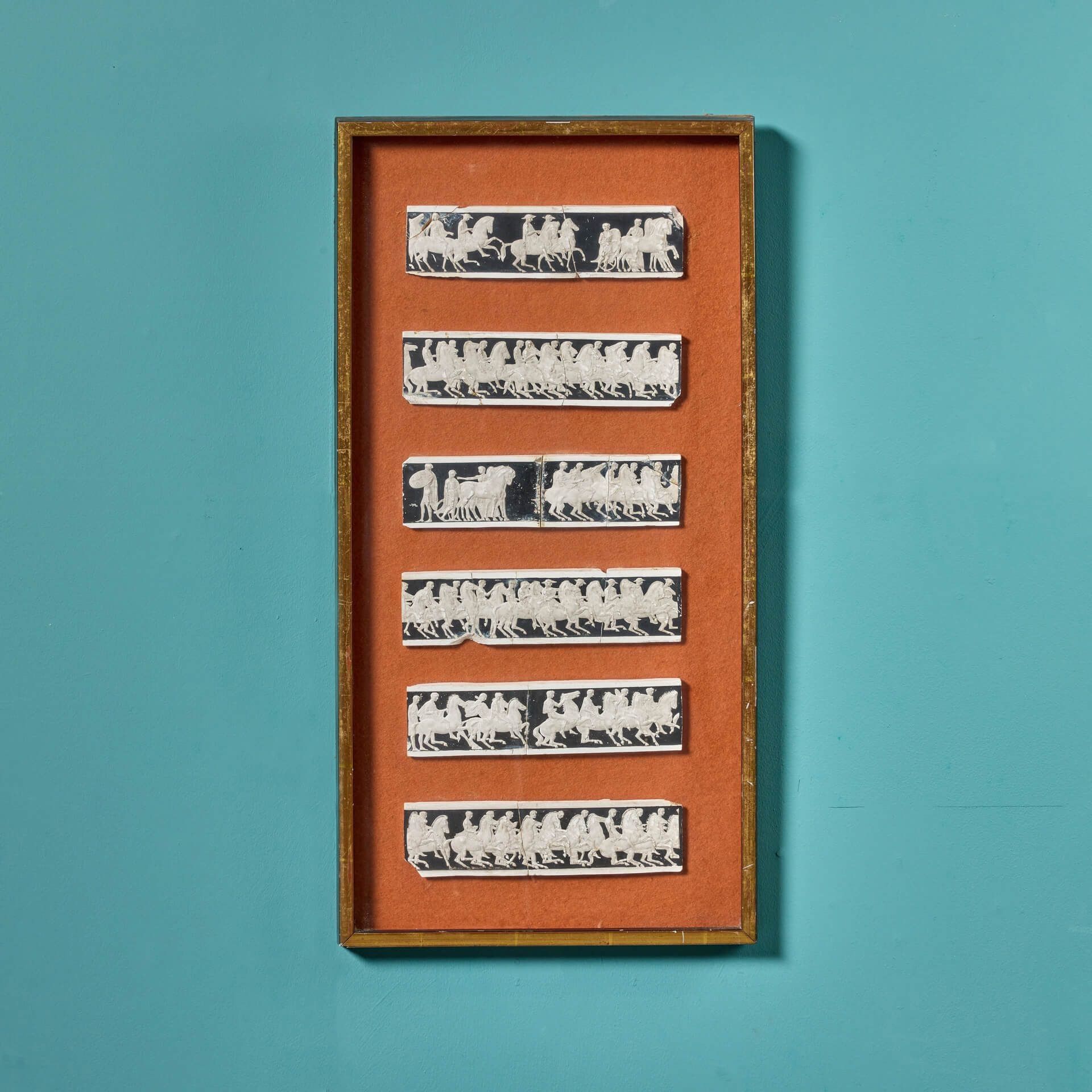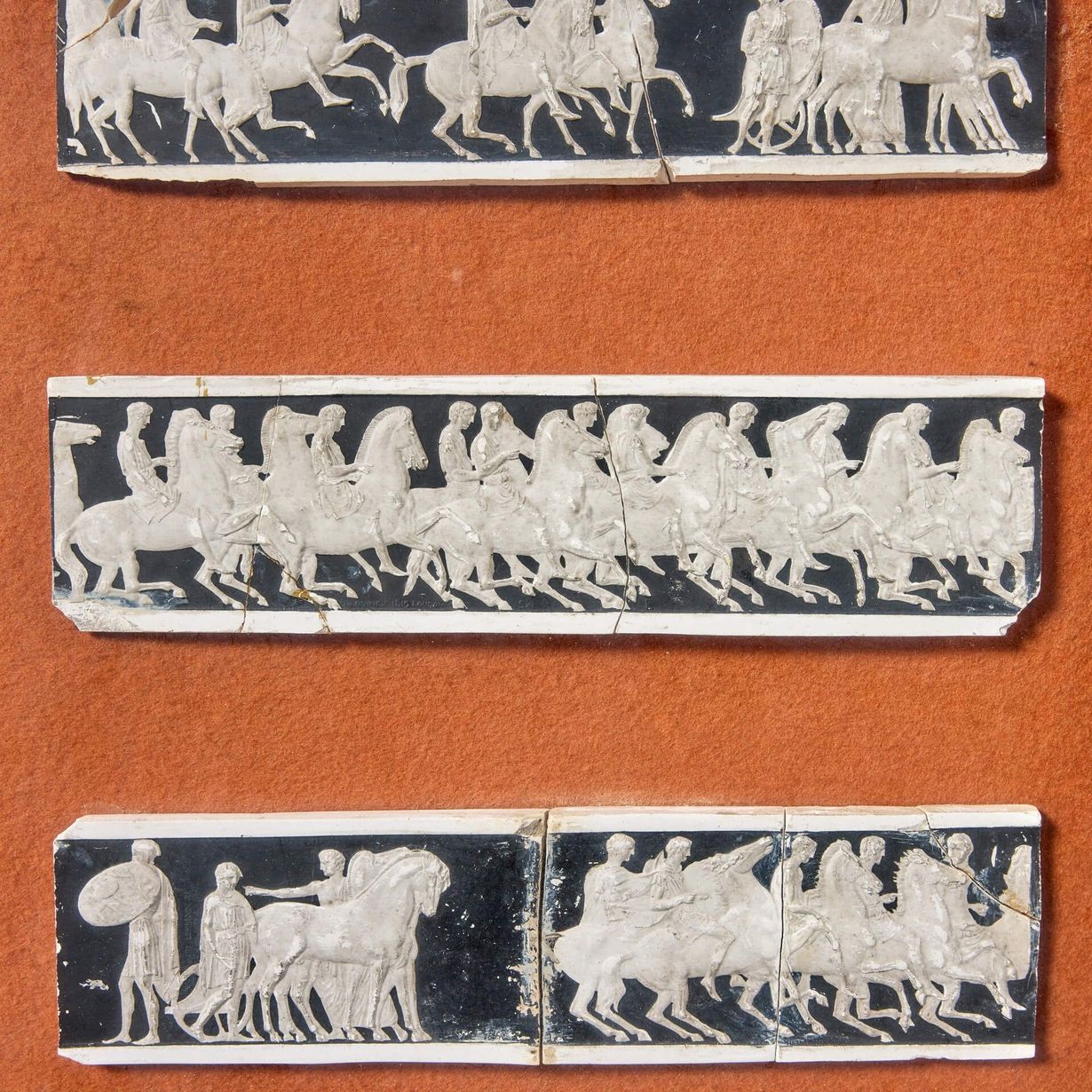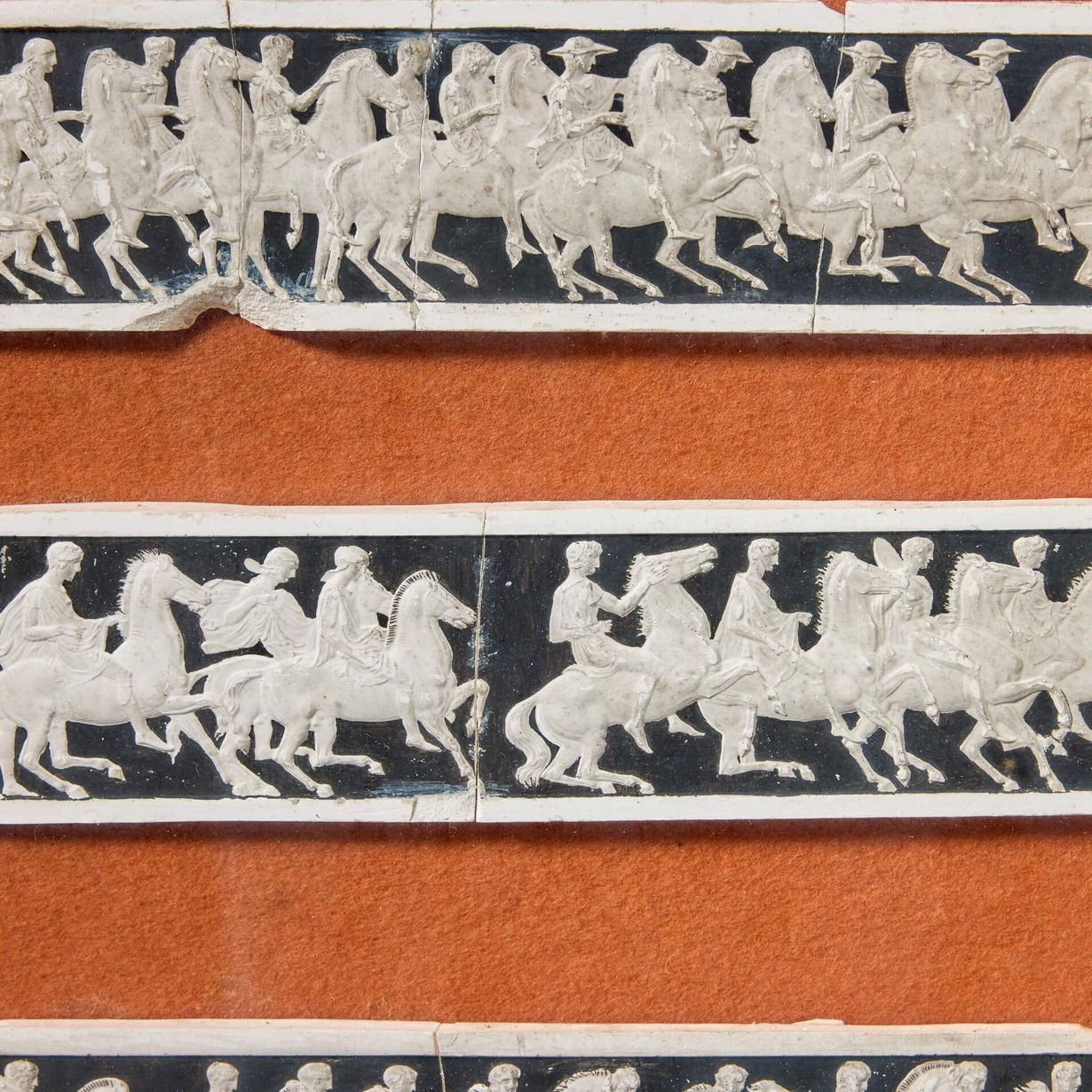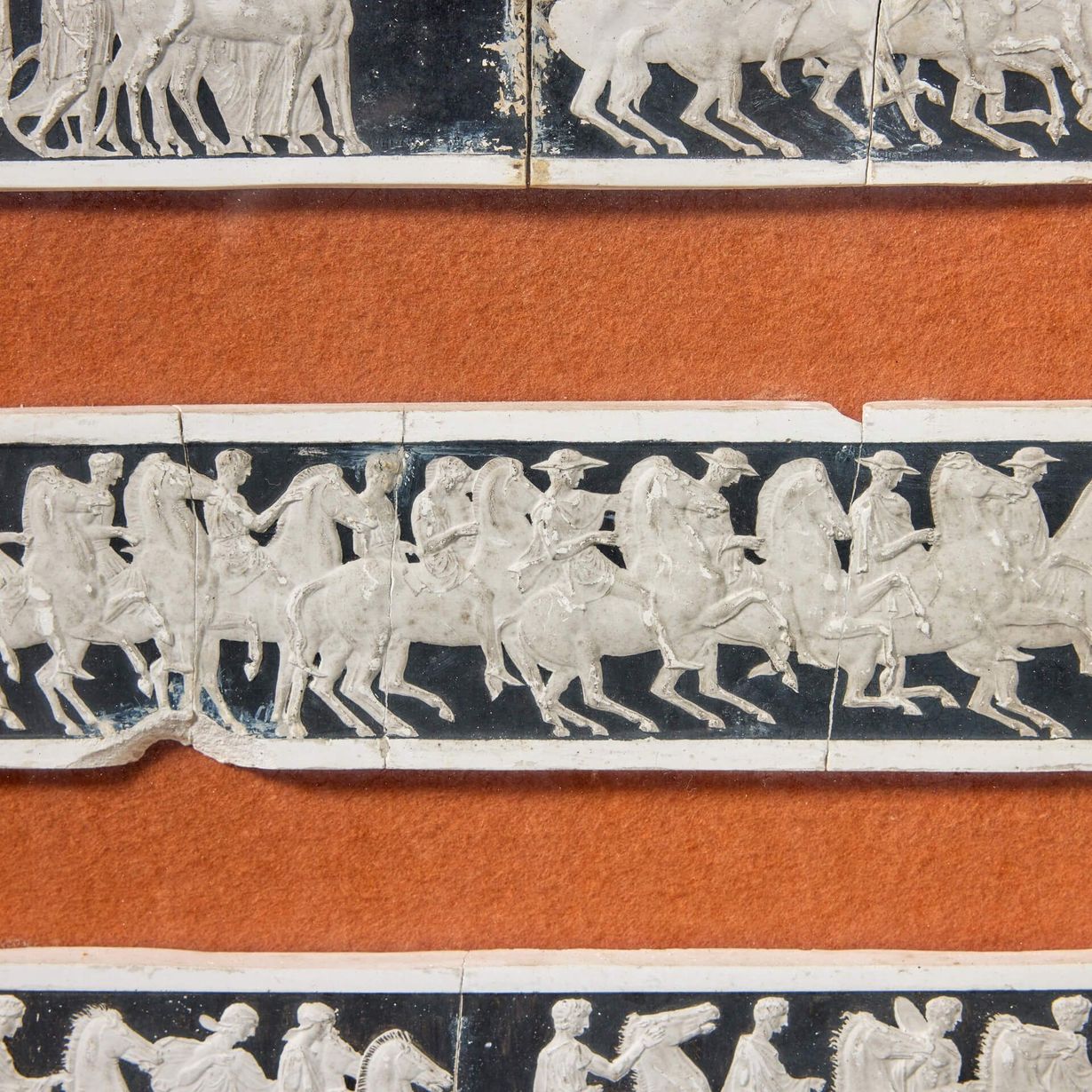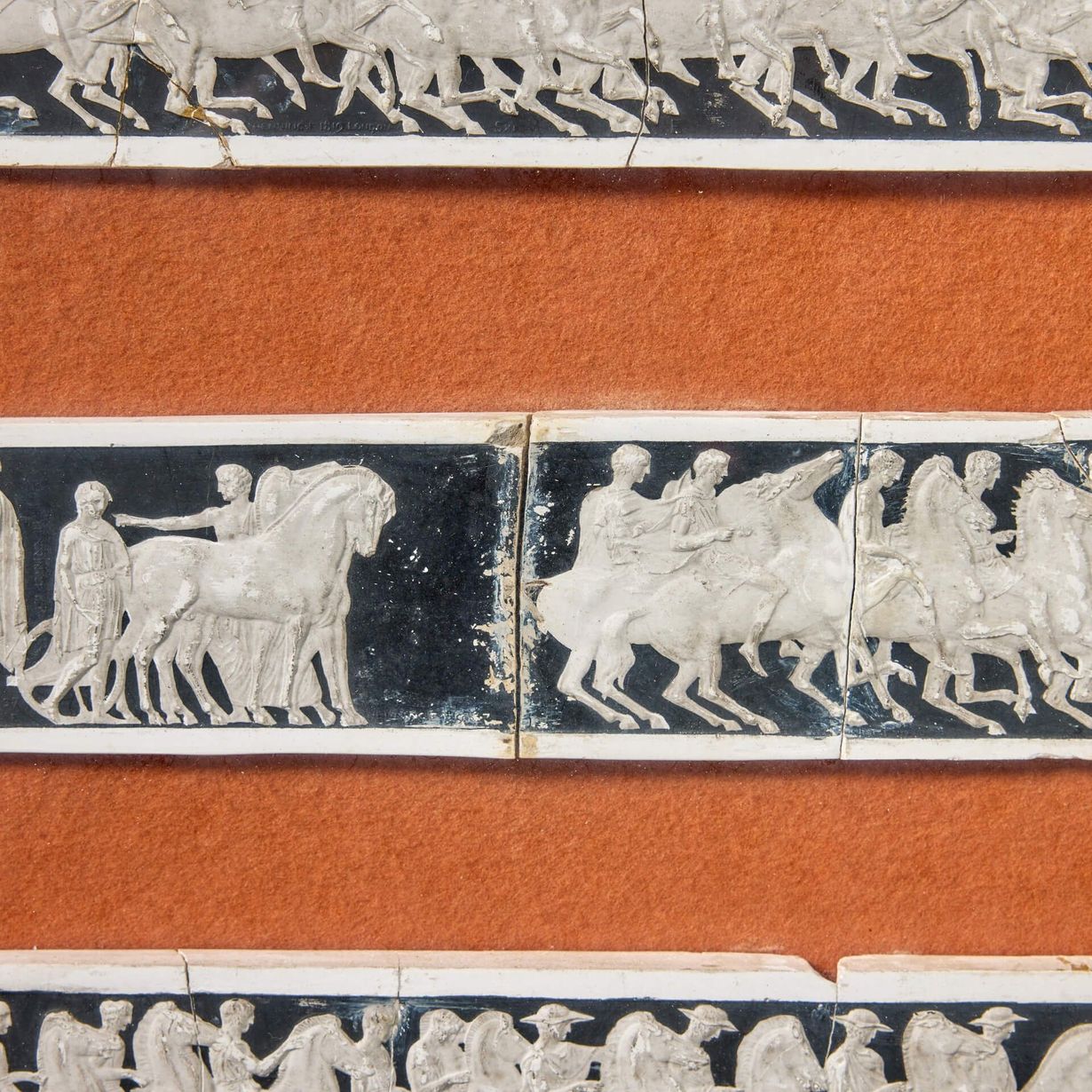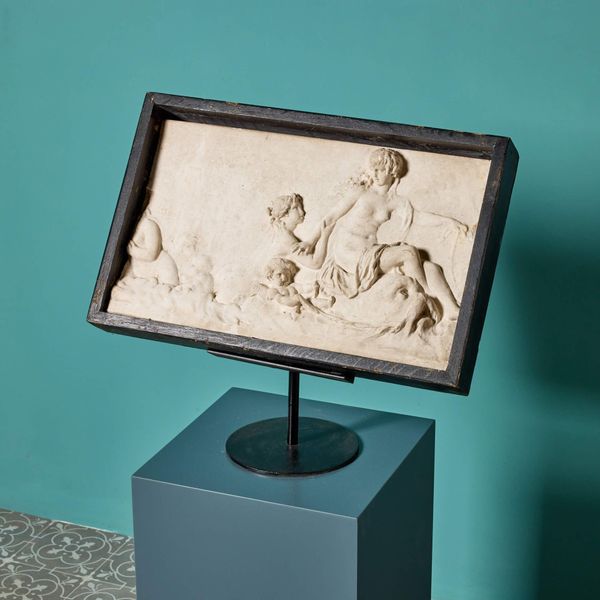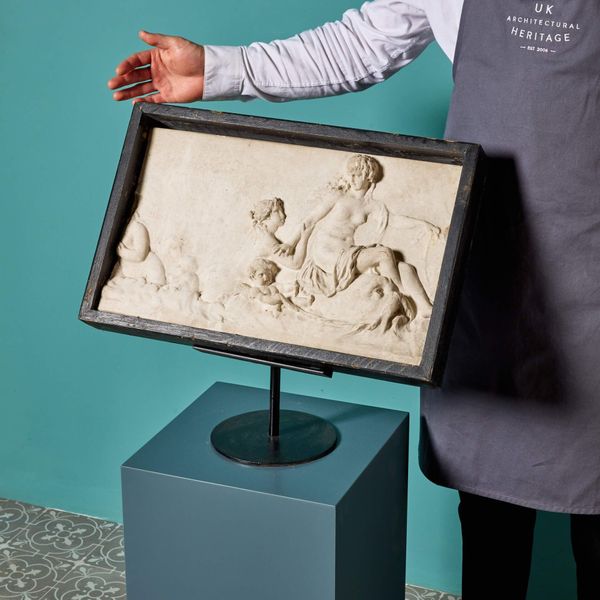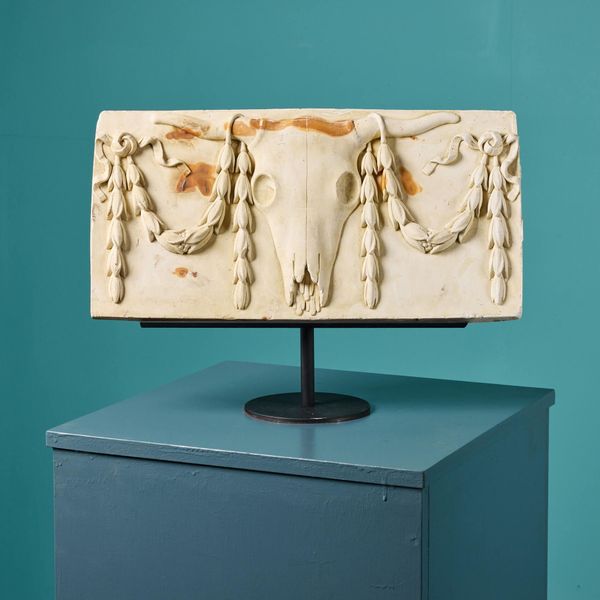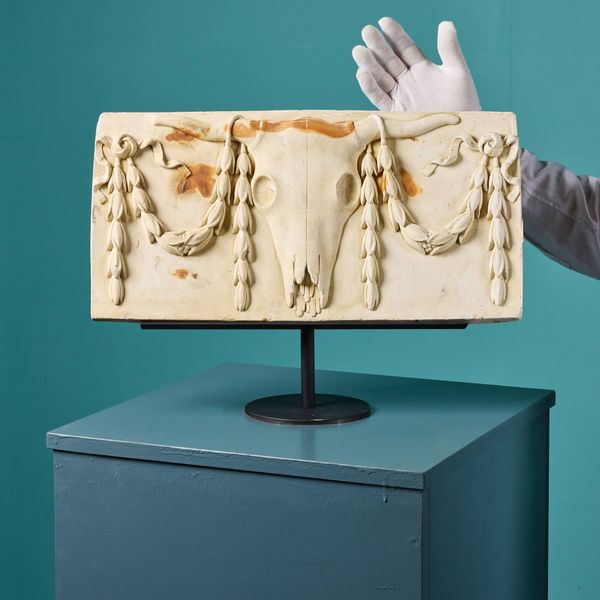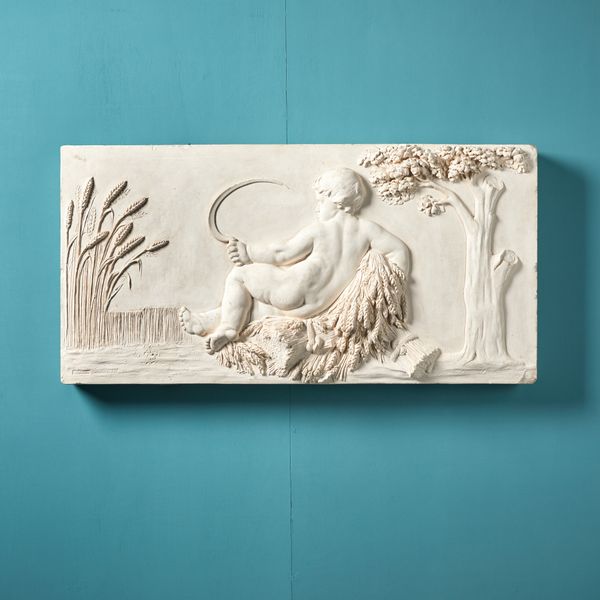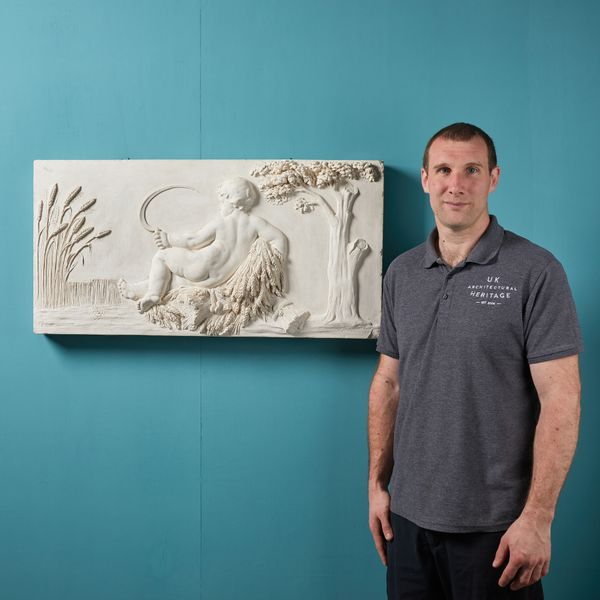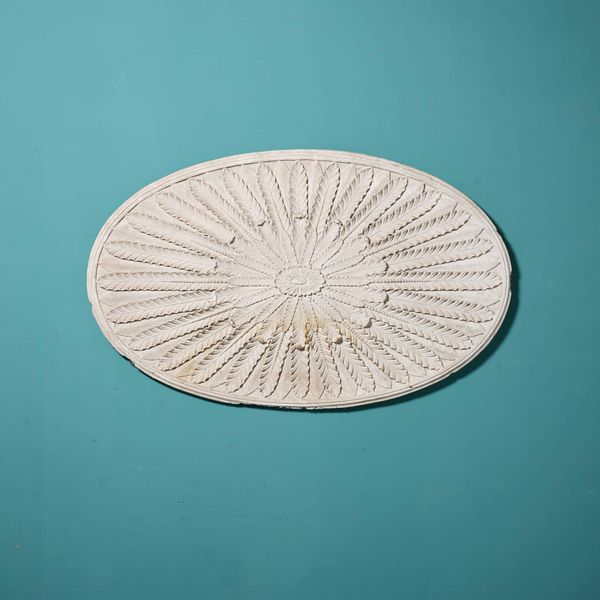About this piece
back to topA collection of Greek style plaster frieze models circa 1820, later framed with glass to the front. Likely once part of a larger sequence, the plaster fragments are highlighted with black paint and depict Greek cavalry similar to that detailed on the famous 6th century BC Parthenon Frieze.
The Parthenon Frieze
Believed to date from 447 – 432 BC, the Parthenon Frieze is a continuous marble band that once decorated the Parthenon temple, Greece. Dedicated to the goddess Athena, the temple was abundant with decorative sculpture considered some high points of classical Greek art. The frieze, which encircled the upper part of the main temple within the outer colonnade, detailed the procession toward Acropolis during the Great Panathenaea, the festival in honour of Athena. Of the 160m of the original frieze, 128m survives, the majority of which can be found in the British Museum and the Acropolis Museum, Athens.
